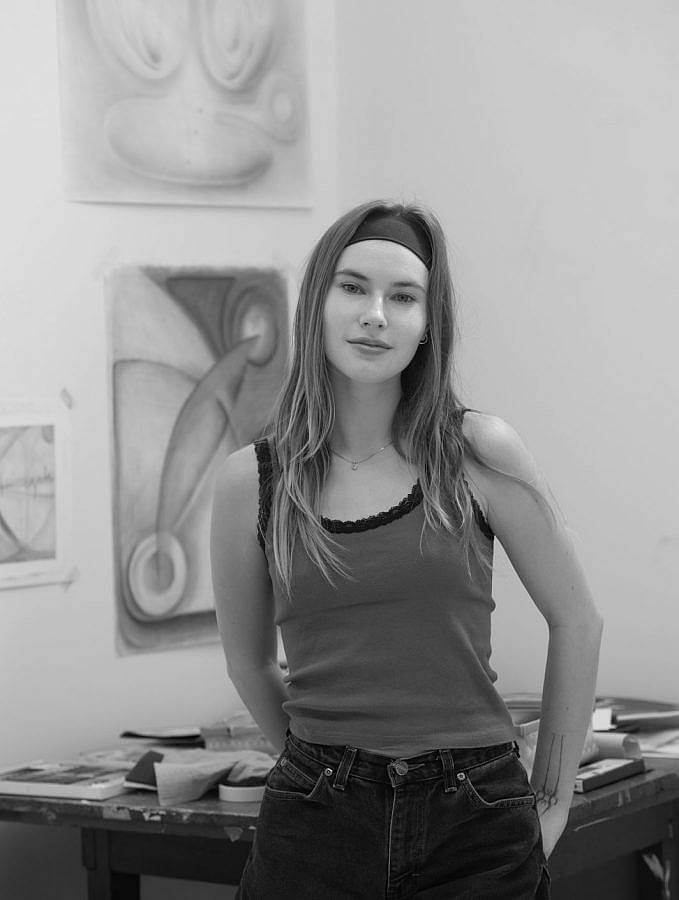Tell us a little bit about yourself and what you do.
My name is Bridget and I’m from Richmond, Virginia. I try to transform the residue of my experiences into things that represent the elusive nature of feelings and other forces that evade our rational understanding. I make drawings and sculptures.
Could you describe your practice?
It always begins and ends with drawing. I consider my whole practice a drawing practice. It starts with a feeling which eventually becomes an image through an intuitively heuristic process of contemplation, meditation, and physical experimentation. Then what usually follows is an obsessive desire to explore that image multilaterally. The majority of my practice is getting my mind to take as passive of a position as possible in the creative process. To make space for things to show up internally and to be able to notice when they do, so that I can follow them and nurture them externally. In that way it’s mostly a practice of trusting in the wisdom of automatic direction without needing to know from where or why it originates.
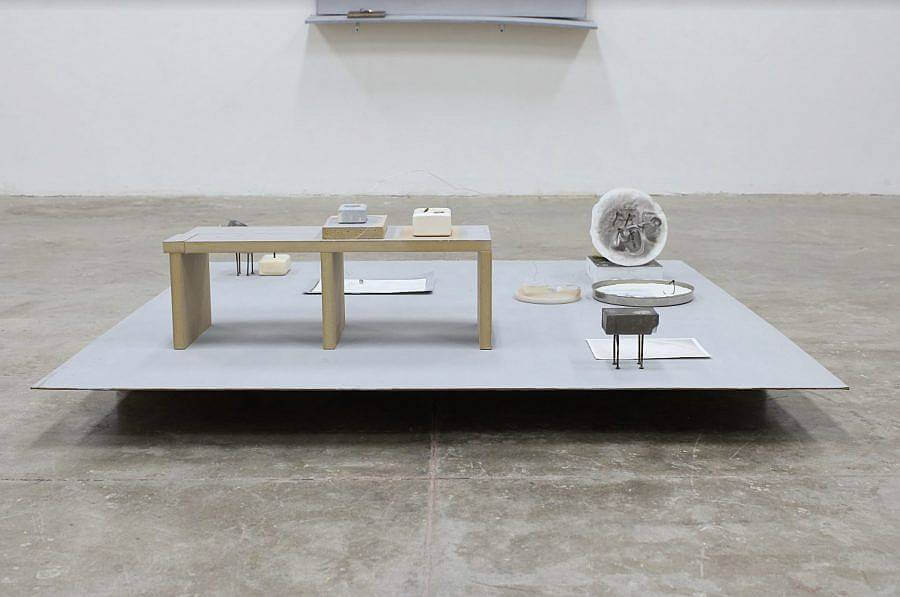
What have you been reading lately?
I’ve been reading the diaries of Anais Nin for the past year or so now, which has satisfied an interest I’ve had in autofiction and alternative but adjacent practices of surrealism that happened outside the parameters of the movement itself. I enjoy her almost compulsive psychoanalytical tendencies and her consideration of the personal and emotional realms as not only vital to but inseparable from artistic practice. Honestly though, I started reading her because she’s a Pisces like me and I needed the catharsis. I also recently finished reading Catherine Malabou’s “Ontology of the Accident”, which I thoroughly enjoyed, and I think has become a sort of seminal text for me. I’ve also been exploring “Loneliness” and other texts from Clark E. Moustakis in order to scratch the unceasing-and-sometimes-torturous psycho-theory itch in my brain.
What is your driving force?
An intense, sometimes disturbingly powerful curiosity. I’m really easily bored. It’s deeply uncomfortable, it creates a tension that fuels an obsessional need to express it. But I enjoy learning from it and traversing its depths.
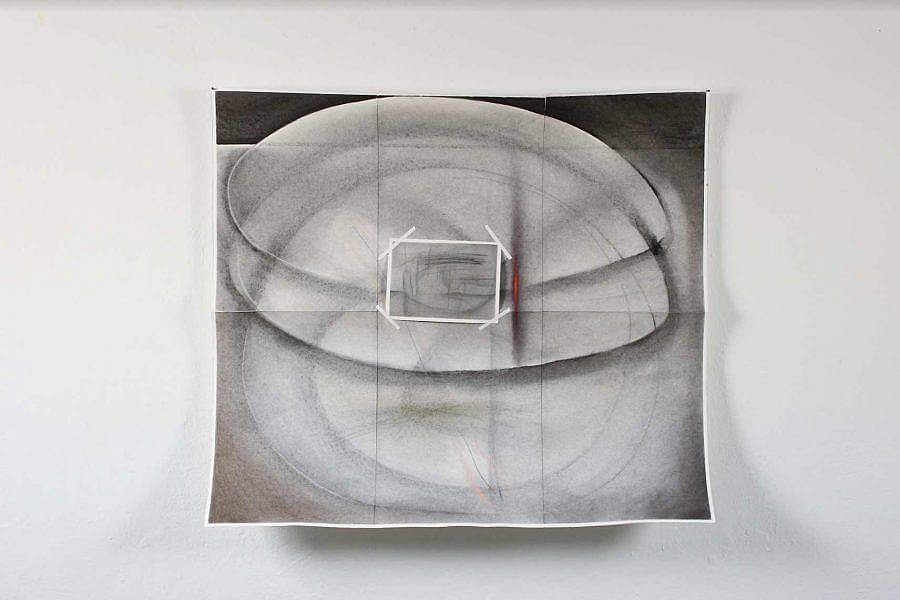
What are the main motifs in your work?
There’s a lot of circles. The circle represents a state of being. Being split or whole. Solid and weighted or gaseous and translucent. Defining a space or being defined in a space. Framing a point of view or being a point to view. Embedded, opposed, integrated, apart. Being is a unity of opposites, circularity. Some other things that show up a lot are doubling, mirroring, points of connection/disconnection, overlap, precariousness. Divulgence and meeting points. Materials that have or can easily change states – waxes, soaps, powdered carbons, objects transformed through rust, brokenness, salvaging, direct action.
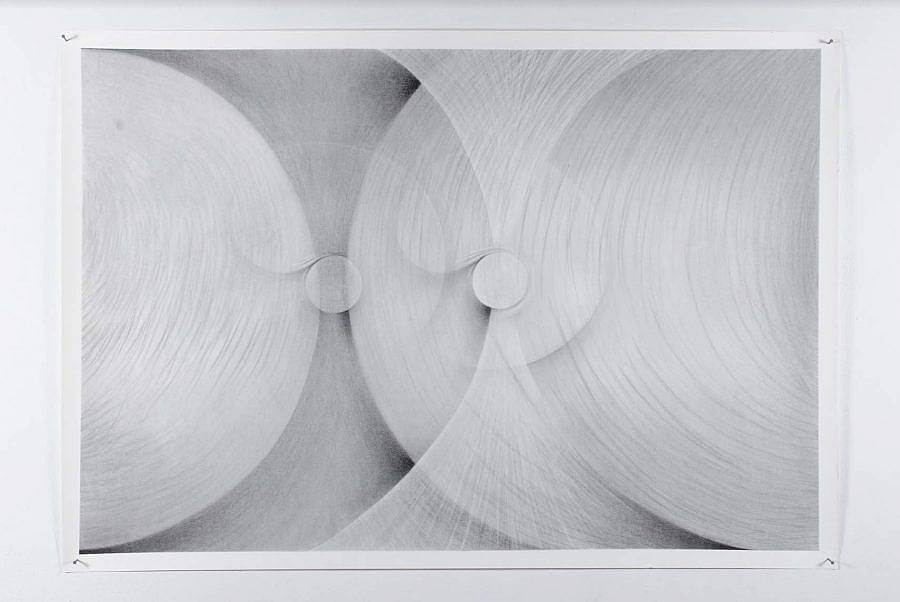
Do you have any daily rituals
In the daytime I typically stay awake. But at night time I really enjoy sleeping.
What do you collect?
My cat’s whiskers, Blythe dolls, opaque and transparent spheres, and sometimes my eyelashes.
Where is your favorite place in Richmond? Why?
Libby hill park. I’ve had a lot of important and mundane moments there. I’ve done a lot of growing up in that park. Also, optimal horizon line viewing.
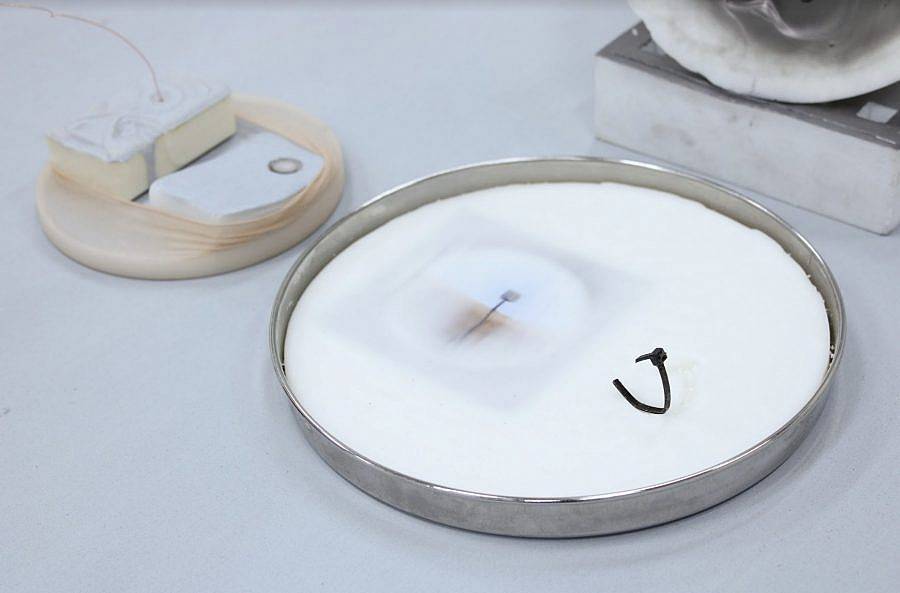
What are some recent, current, or upcoming projects you are working on?
I’m organizing a show of drawings in tandem with the brilliantly talented artist Grace Bromley, whom I have the privilege of working so closely with for this two person show. It will be taking place at the Material Room here in Richmond sometime early next year, the date of which will be announced in the coming weeks. Right now, I’m finishing up my final semester of undergrad at Virginia Commonwealth University and also working with Code Magazine on a feature for the next edition of their publication. All of which I’m super stoked about.
What’s something you’re proud of?
My ability to sustain my sensitivity and curiosity. It’s a difficult but rewarding thing to remain permeable and open.
Interview conducted and edited by Emma Kang James.
